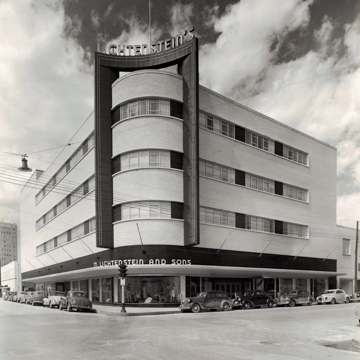This is a notable exception to the two-part commercial blocks and Spanish Mediterranean high-rises along Chaparral Street that was, traditionally, the city's main commercial artery. A family retail establishment dating to 1874, the Lichtensteins' decision to move from their older two-part commercial block to a new Moderne locale signaled the acceptance of contemporary styles by the city's entrepreneurial elite, a trend that would come to full fruition following World War II. The four-story, buff brick, round-cornered building retains its canopy, display windows, and ribboned fenestration pattern at its top floors. Unfortunately, a distinctive, vertical, concave decorative metal feature that once offset its round corner and was topped with the store's name is now missing.
At 715–719 N. Chaparral Street, the Ritz Theater (1930), by W. Scott Dunne, is mission-like, twin-towered entertainment venue missing its ornate marquee and vertical sign. This and other contemporaneous buildings along Chaparral Street illustrate the commercial thoroughfare's emerging new face after its virtual leveling in the Storm of 1919 and the economic expansion following the opening of the port.















